
Gas Heating

Welcome to Gas Heating: The Energy Efficiency Podcast – episode 5, the podcast that brings you a mix of energy efficiency news, products and tips all year round. We’re interested in profiling people and products involved in promoting energy efficiency habits, products and information, so please do get in touch if you have something to contribute.
This week: gas heating, where to start with draughtproofing your home, and energy efficiency in self build. Before we get on with our advertised features, the Guardian recently ran an article suggesting that supermarket fridges could form a nationwide virtual battery for the National Grid. Research in a mocked-up supermarket, undertaken by Tesco and the University of Lincoln, shows that electricity can be provided in short bursts to the grid by briefly stopping power to supermarket fridges. Power is already turned off to the fridges each day to allow for deforsting, and the proposed system would replicate this. The power wouldn’t be off long enough to affect the food, but the top-up power could help balance a dip in the grid’s energy supply.
The Guardian article quotes Professor Simon Pearson of the University of Lincoln:
Cold food is, in fact, the UK’s largest battery. There is sufficient ‘cold energy’ in the food to keep a refrigerator cold if the system reduces power for short periods to help offset power shortages on the National Grid.”
The National Grid already operates this type of system with companies that own utility-scale batteries. Increasing the scale of the operations to include a nationwide supermarket chain increases capacity while helping supermarkets reduce their carbon footprint. Commercial refriferation systems make up about 12% of the UK’s carbon emissions, with energy bills accounting for 1/3 of costs for a typical retailer. This is one example of technology helping the UK to reach its net zero target.
—
Gas heating
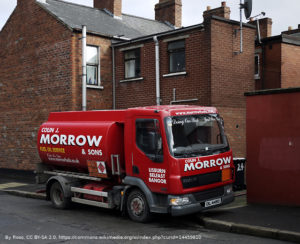
Last week we looked at district heating networks, concluding that they were more energy efficient than heating produced by individual boilers, and ideally produced their heat from renewable sources or waste heat. This week we look at mains gas heating. Wikipedia defines natural gas as “a non-renewable hydrocarbon”, describing it as “a major cause of climate change” both in itself if it leaks, and because of the CO2 emitted when it’s used.
Widely available
Gas heating is far more widely available than district heating, but it isn’t available everywhere. Rural areas tend to be less likely to be connected to the gas network, so oil is a more commonly used fuel in the countryside. OVO Energy states that 3.9million homes in the UK are without gas heating, and Citizen’s Advice Scotland quotes a figure of 46% of households in Wales without access to gas.
In the UK the average gas-connected home is built from the 1950s, and average off-gas home up to the 1930s. Of gas-connected homes, over 75% are within bands A-D of the Energy Performance Certificate rating, ie the best-performing four bands.
8 million gas boilers are sold in the UK every year. Simply, they heat up water to pump through pipes to radiators and provide hot water to kitchen and bathrooms. According to Rointe, suppliers of electric heating infrastructure, gas heating systems haven’t changed much over the years. They tend to be more expensive to install than electric systems, being more complex, and don’t last as long. Gas heating comes with the risk of carbon monoxide leaks and burst pipes, and is the UK’s biggest greenhouse gas emissions source.
Cheap to use
The Energy Saving Trust describes gas as usually being the cheapest form of heating fuel available, and having the lowest CO2 emissions apart from wood. OVO has pulled together data on energy prices and the energy efficiency of the most commonly used forms of fuel, and presented them as a graph on its site. Gas comes out as the cheapest, electricity the most expensive. That graph is on a very useful page that gives a comprehensive run down of the different forms of fuel generally available and what a household can do to maximise them, so it’s very well worth a read if you’re considering a change or an upgrade.
Gas produces lower CO2 emissions as it is’clean burning’, ie it produces fewer undesirably by-products. When used to generate electricity, gas produces about half the emissions of coal. It is also a more efficient fuel than coal, but it’s all relative. A coal burning plant is around 30%+ efficient, whereas a gas-fired one is around 43% efficient. It’s not great, but it’s better. In plants that use waste heat from a gas turbine to power a steam turbine, known as a natural gas combined-cycle, efficiency leaps to as much as 60%.
Fracking
Gas is such a popular fuel in the US due to its lower CO2 emissions, the speed with which gas plants can increase or decrease production in response to available quantities of wind and solar power, and its low price.
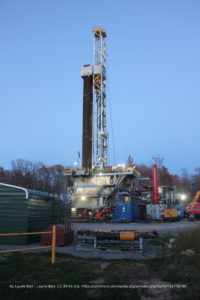
In America, virtually all natural gas is produced domestically, mainly in Texas, Pennsylvania and Louisiana, and exported to Mexico and Canada. It was discovered originally as an unwanted by-product of oil production. The US is the world’s largest producer of natural gas, passing Russia 10 years ago. An ample supply in America brings prices down to much lower than in Europe and promoted natural gas in electricity generation.
It’s worth noting however that shale gas is now a key source of natural gas in the US, which is a controversial subject both there and in the UK where its extraction is known as fracking. Fracking is blamed for earth movements and contaminated water supplies, among other things, and as part of the fossil fuel industry its operation is unpopular in the UK in particular.
In the EU as a whole, the use of gas is declining slowly. Gas-fired power plants that used to run continuously now tend to run during peak times only. A report from the European Energy Agency suggests that warmer winters are reducing the call on gas in the winter, and that renewables are stepping in to make up ever larger quantities of the heating power demand. However outside the EU, and not just in America, the use of natural gas is increasing.
So how do you use gas heating efficiently? Really it depends where you look for advice. There is a theory that the boiler is best left on low all the time, but another that you should use the heating only when you need it. Another belief is that radiators should be set to a very low temperature or turned off in rooms seldom used, but that argument is countered with the suggestion that the fabric of the room will deteriorate.
Getting the best from any particular gas-fired set-up means understanding the specifics of your system – your boiler, your radiators, your house, your habits, your budget – and being prepared to tweak the system to get it right for your comfort and the house’s fabric. There are a couple of web pages looking at the ins and outs and whys and wherefores of all this, Money Saving Expert and Ask Jeff. There’s a wealth of information available on both.
Clunky
Reading up on the nuts and bolts of gas heating, it comes over as a clunkier system to use than eg electricity. Heating up just one radiator requires the system to be activated as much as heating the whole house, and gas boilers are at best 90% efficient. It can be less easy to control heat levels in different parts of the house. There’s no getting away from the fact that gas is a fossil fuel, so even the newest and most efficient systems are still running on a fuel that has really had its day. Although cheap to run on a per-unit basis, installing and maintaining a gas system can be expensive and invasive, and running it comes with ongoing risks. If you’re looking for the most energy-efficient form of heating, gas wouldn’t really be in the running.
According to a report from the CCC, more or less all homes currently running on or connected to the gas network would be suitable to switch to hydrogen heating or a heat pump, but barriers to fitting these include upfront costs and the suitability of the home itself (heat pumps need to be connected to energy efficient buildings in order to perform well). The CCC report, titled Heat in UK Buildings Today, is suprisingly interesting if a bit technical and wordy.
Emissions
The report points out that the 23 million homes currently connected to the gas network account for a walloping 77% of total UK heating emissions. The CCC wisely points out that these homes may have other issues affecting their performance, such as lack of cavity wall and loft insulation. Fitting these would reduce the heating needs and thereby help to tackle fuel poverty and reduce carbon emissions. It emphasises the scope for energy efficiency in new builds, stating:
” While the energy efficiency standards for new homes have increased substantially over the recent years, low-carbon heating sources are not required in new homes.” We will be looking in a future episode at the insulation standard required in new build homes constructed by mass building commercial outfits.
The report presents the rather sad finding:
“More generally, there is evidence that households typically do not think about heating, associated emissions, or what heating system they use, as long as it is delivering the expected level of comfort and it is considered financially affordable.”
This being the case, energy efficient heating systems need to be baked in as widely as possible so that what households aren’t thinking about isn’t doing any more damage than is unavoidable.
—
Where to start with draughtproofing your home
Or you might ask, why draughtproof your home? To echo the CCC’s point in the last feature, reducing a home’s need for heating has benefits all round. The bills go down, the home is more comfortable, and there is a reduced need for whatever fuel is being used to provide the heat. It’s also good for the fabric of a building, but consider the difference between draughts and ventilation. Ventilation is needed, controlled and welcomed, draughts aren’t.
So where do you start? If you haven’t already listened to our feature on draughtproofing historic buildings you might find it useful to do so now, as there can be quite a bit to consider.
Open doors
First you need to understand your home and your habits. I knew someone who left their back kitchen door open 24 hours a day so that the dogs could come and go freely (if only we’d had the scope then to provide them with a dog-size Petflap). Draughtproofing the kitchen windows isn’t really going to help if the door’s open all day, but paying attention to the space between the kitchen ceiling and the floor of the room above could pay dividends. I knew someone else in a damp home who kept the heating on low 24 hours a day and opened windows so that the house stayed a comfortable temperature. Draughtproofing rooms where the windows are always open wouldn’t be the best use of budget – better instead to address the dampness.
Ventilation
So once you know where the draughty spots are in your house you can tackle them. If you heard episode 2, Passivhaus, you’ll have heard about the C.H.E.E.S.E project in Bristol that offers affordable thermal imaging to identify cold spots in a building. Common trouble spots are poorly fitting doors and windows, draughty letter boxes and pet doors (our company started in response to just that problem), but pay attention also to, for instance, where cables go through walls. Any vents should be left unblocked, but you can open and shut them when needed. Be aware too that some rooms need very good ventilation as they can become steamy – the kitchen and bathroom are obvious places, and a utility room if you have one. Anywhere with a flue or open fire also needs good ventilation.
As the temperature drops it’s easier to feel where draughts come in, but be sure to distinguish between windows that just aren’t very insulating, and windows that have actual draughts coming in around them. If you aren’t planning to replace draughty window units, then fitting a sealing tape or strip around the draughty part of an opening window will help to block draughts. Check it doesn’t impede the action of the window so you can still open it. A non-opening window can be draughtproofed with silicone sealant.
Doors
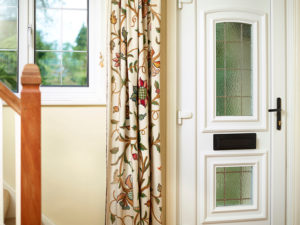
Doors are quite easy to draughtproof. First check whether the door itself fits its frame snugly and address any problems there. The next three steps are dealing with a draught coming in under the door, through the letterbox and through the keyhole. Draughts under the door just have to be blocked, if replacing the door or permanent remedial works aren’t feasible. A good old-fashioned door sausage helps, as will a curtain. Your granny probably had a door sausage – mine did, complete with fabric ears and nose to turn it into a sausage dog – and they’re simple to make if you fancy a wee project.
A curtain is a good idea no matter what, as it will make the area around the door more cosy once temperatures begin to fall. There’s something quite primitively comforting about locking the door and pulling across a snug curtain, on a cold, dark night.
Depending on the design of your door’s handle and lock, you may be able to fit a cover to your key hole. Try to use a material that insulates, rather than a metal which will conduct cold air.
Letterbox
Lastly the letterbox. Consider three things here: the fit of your letter plate, the action of your letterplate, and what you fit to prevent or block draughts. A letter box aperture is just a hole through the door, and to ensuree that draughts don’t whistle in round it, the letter plate needs to fit snugly. That’s the first thing to check.
Secondly, check the action of the flap in the letter plate. Does it stick? Does it fit the gap properly? If it sticks, try making sure all the edges are clean – depending on the material this might need a damp cloth, or brass or steel cleaner and a SOFT cloth – then see if the action improves.
If the letterbox is in really poor shape look at replacing it. These days fewer people have giant wads of newspaper delivered through the letter box and the chunky Yellow Pages is a thing of the past, but large deliveries being stuffed through the average letter box can cause damage.
If you still suffer from letter box draughts, you need a draught excluder, a unit that fits on the house side of your door and performs in one of several ways to block draughts. Sometimes these are brushes, sometimes magnetic strips, but anything of this ilk provides a barrier to post as well as of sorts to draughts, and can result in damage to the letterbox as the delivery person rams post through the obstructions. The Ecoflap lifted at the merest touch of a pizza shop flyer due to a widget, yet beccause of the way the flap was cut would stay shut and not rattle in very stiff winds. It will be replaced by the Letterplate Eco, an external draughtproof letter plate that works on the same principles.
Pet doors
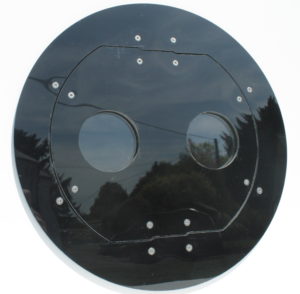
Approach your cat flap in the same way. This is used, potentially, many more times a day than a letterbox so all the same considerations apply but tenfold. If you don’t have a pet then consider sealing the cat flap. If the problem is simply that cold air comes in around the pet access flap and there is no insulation to the unit, consider upgrading to a draughtproof Petflap. It works on the same principle as the Ecoflap, blowing more firmly shut against its frame in a draught. It also has 12mm of material between your house and the weather outside, providing insulation against cold weather.
Also in episode 2 we mentioned the Chimney Sheep, a sheep’s wool chimney blocker that prevents draughts coming down the chimney while still allowing the house to breathe through the chimney. Obviously this needs to be removed if and when you use the chimney, but, especially if you have chimneys you never use but don’t want to block up, this is a great solution to an obvious and large draught risk. Loft hatches are another large draught hazard so apply strip insulation round there if need be.
Many of us have cables coming into the sitting room to deliver digital services. It’s not unusual for draughts to creep in round the cable, and we even had ants come in through ours once, so pay attention to anything like that and block the gaps. The same applies to pipes, but be aware of what the pipe is used for and how it might behave in hot, cold or freezing weather.
These measures are small, but there’s good value to be had from checking these areas. It’s possible to spend a great deal of money on insulating your home and installing high-performance hardware, but if draughts can still come in in all the old places then the job isn’t finished.
Infrastructure
Once the small jobs are taken care of, consider next how much cold air comes up through the floor and round the edges of the room. Floorboards need to be flexible so make sure any measures employed take that into consideration. As well as filling gaps, feature floorboards can be covered with a rug when it gets particularly cold, if you want some temporary extra cover.
A very useful page on The Energy Saving Trust – no episode complete without a mention – mentions old extractor fans. If they’re no longer in use they can be filled and sealed at each end.
If all of these spots are checked and dealt with, your home should be that bit more comfy, cosy, and cheaper to heat come the winter. An article on the Homebuilding&Renovating website claims that many of these simple measures can pay for themselves within a year, but that’s very much dependent on individual circumstances. A page on the Which website goes into detail quantifying savings.
Lastly, it’s worth investigating whether you’re eligible to take advantage of a funding schemes. There are groups and councils all over the country, in fact all over the world, offering free and subsidised good and services to draughtproof homes, so a little while spent searching for something in your area could pay dividends.
—
Energy efficiency in self-build
Self build is a huge area, itself the subject of dedicated podcasts including Ben Adam Smith’s House Planning Help. Planning a self build is the perfect opportunity to design in energy efficiency measures that the house will benefit from for years to come. Your plans are bound to be constrained by something: planning position, location, budget, finding the right architect and builder or even your type of mortgage. Unless you yourself are the eco build expert, then it’s worth putting yourself in the hands of someone who is. That’s the technical, project management and compliance bits taken care of, but the decisions will come down to you.
Fabric First
Firstly you need to decide how far you’re taking your energy efficient build principle, what does the phrase mean to you? Reusing materials? Upgrading and expanding an existing building on site? Building a Passivhaus? What is common to most eco builds is a ‘fabric first’ approach. What is fabric first? Kingspan Insulation defines it as:
“maximising the energy performance of the structure itself through the components and materials making up the building envelope. This is before renewable mechanical and electrical building services are considered.
In other words, constructing your building to save energy for you before renewable technologies are factored in.”
In other words, the house itself is designed and constructed so that it’s already performing at a better level of energy efficiency than a regular build, before goods and services are taken into account. This really has to be the first principle of an eco build, and it can be achieved in many ways, including through the innovative use of ancient materials, such as straw bales and sheeps wool insulation.
The website LoveProperty has a page on straw bale construction, featuring homes including Strawbale Getaway in Colorado, The Gatehouse in Dumfries and a house in Zoermeer in the Netherlands. These are fascinating projects and well worth a read.
Sheep’s wool
Sheep’s wool is not only insulating but provides a sound baffle and acts as a moisture buffer. It has an insulation value unmatched by any other material, according to the website Sheepwoolinsulation.com, which provides sheep’s wool insulation to the building industry. As well as loft and wall insulation they provide underlay, cylinder jackets and even slippers, so you can get the full sheepy experience.
Prices for sheep’s fleeces have been very low in recent years, so given the work involved in processing and marketing them they haven’t been valued. This changing now, with wool being promoted for insulation but also for all sorts of other products including duvets and coffins. Sheep’s wool was used recently in Manchester to insulate historic buildings, sourced locally to reduce the shipping miles. We think of this as new and exciting, but sheep’s wool insulation has been used in one form or another for generations. Not only does it keep you warm in the winter, but it keeps you cool in the summer, so you almost have to ask why an eco-build wouldn’t consider it for insulation. There are of course many other options for the building materials, including high-performance prefabricated panels.
Airtightness
An energy efficient self build will pay close attention to airtightness. It’s going to be a high priority. We receive many enquiries from people building energy efficient homes with very thick walls, who want to put in a cat flap with trunking that reaches right through. We can do this happily. We’ve recently received two enquiries for walls 60cm thick, which indicates just how much insulation can be fitted into a wall.
A page on the website acarchitects.biz goes into detail on how well various wall materials perform on airtightness and is a good place to start if you’re doing some research. They make the point that whatever you go for, airtightness and insulation go together so make sure they both feature.
Windows
Windows are crucial to the success of an energy efficient home. Get it right and you’ll get a beautifully light home, keeping your lighting costs down and benefitting from the warmth generated. The problem can be that large areas of glass that conduct heat into the house in the daytime (known as solar gain) can swiftly conduct it right back out again after dark. Triple-glazing can help to address this. There is also the balancing act between getting the benefit of the warmth and not overheating.
Achieving the right balance for you will require technical help and the best performing window units your budget will run to. This podcast from Mottramm Architects in Maine covers all the considerations of choosing windows to complement an energy efficient build.
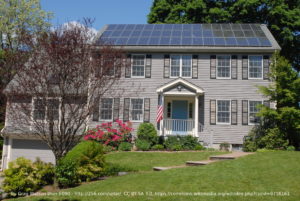
Power
Once your home is built from high performance materials, you’ll need to power it. Are you going to fit your own energy generation systems? Even if you’re not fitting PV panels for instance, or a heat pump, you’ll likely be installing energy efficient heating. In this instance underfloor heating is a popular choice.
Mechanical Ventilation Heat Recovery systems recycle heat that would otherwise be lost. They tend to be a requirement of passivhaus certification, but you don’t have to be building a passivhaus to benefit from MVHR.
It goes without saying that any build aiming for a high standard of energy efficiency will easily surpass current building regulations (we’ll take a look at building regs in a future episode). As with home draughtproofing measures and depending on the nature and scale of your self-build, it’s worth investigating if there are government schemes where you live that might help with the cost of an energy efficient boiler, or fitting loft insulation.
For inspiration, why not look at the Grand Designs web page on energy efficient self-builds? It features seven builds, from agricultural housing to extended period houses to glossy new builds. See what can be done in all sorts of locations from a lochside to a forest to the Sussex suburbs.
—
Energy saving product of the week:
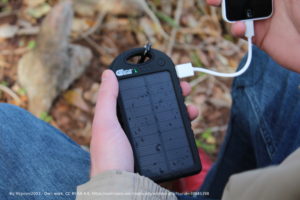
This week’s energy saving product is something you might want to get your hands on with a spell of sunny weather coming up – solar chargers for mobile phones. These use solar power rather than mains power to charge not only phones but tablets and laptops. There are quite a few to choose from and while none of them are quite ready to replace a standard mains charger, that doesn’t mean you can’t benefit from using direct sunlight.
Chargers come in battery form and direct charge form. The battery type stores the energy its solar panels create, giving you a back-up if you’re nowhere near a charging point when your phone runs out of juice. The direct charge type pump the energy they create straight into a device plugged into it, and doesn’t store it for later use. Both have a role.
The units tend not to be cheap – £50 isn’t unusual – so if a solar charging unit appeals to you take a look at the website techadvisor.co.uk for a rundown on what’s available.
What are we up to? We’re still making our next batch of Petflaps and progressing with our photoshoot, none of this helped by illness sweeping through the team. We’ve also upgraded our shopping cart so buying from outside the UK is now a simple matter.
Thank you for listening to episode 5 of the Energy Efficiency Podcast, now available through Apple Podcasts. If you like your podcasts with pretty pictures, a video version is available on YouTube – look for the Ecoflap channel. Until next time you can find us on both Twitter and Instagram as @Ecoflap, and on Twitter we also tweet under @The Petflap In next week’s episode we’ll look at electric heating, energy efficiency in social housing and insulation requirements for new builds. Bye.
Music credit: “Werq” Kevin MacLeod (incompetech.com)
Licensed under Creative Commons: By Attribution 3.0 License
http://creativecommons.org/licenses/by/3.0/
